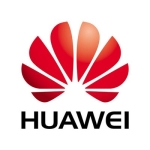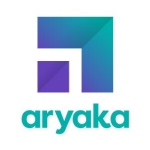What is our primary use case?
I'm in Indonesia, where I use Cisco SD-WAN for DC and DRC to communicate with bank branches. One customer uses traditional simple routing via VGP or SPF to communicate to the head office data center or disaster recovery center. Still, I proposed using SDN technology, Cisco SD-WAN, to improve the application experience, have visibility to the provider link, and communicate directly from the branches to the application, such as Microsoft 365.
The customer also wants to access an application in the cloud from the branches, which requires a proxy, so the traffic goes to the data center and then to the cloud. You can directly connect all components to the cloud with Cisco SD-WAN, so I've implemented the product for the customer.
The primary use case for Cisco SD-WAN is direct internet access, including onboard security. Customers don't want just a simple routing. Customers also want a firewall and IPS feature from Cisco SD-WAN.
How has it helped my organization?
One of the benefits of Cisco SD-WAN is cost reduction for customers. In Indonesia, it's costly to use NPLS and Metro for connection, so I always propose using an internet link to communicate between branches to the data center or disaster recovery center. Cisco SD-WAN can provide that service; the product also keeps traffic secure. Some customers may be afraid to use the internet link or connection to communicate between the branches and the data center because of some critical applications, so it may not be the best practice for some customers.
However, as my company is a partner of Cisco, I give the customer the PLC first before providing the solution, and I have customers happy about what I propose, in this case, Cisco SD-WAN.
If a customer wants access to cloud-based collaboration apps, such as WebEx, Google Meet, Zoom, and Teams, Cisco SD-WAN can integrate with Cisco Umbrella for cloud security.
With Cisco SD-WAN, customers can enjoy cost reduction. Customers also don't need to use a third-party DNS or process security solution because Cisco SD-WAN integrates with Cisco Umbrella. This is how beneficial Cisco SD-WAN is to an organization or business.
What is most valuable?
The most valuable features of Cisco SD-WAN include the DIA and its integration with Cisco Umbrella for DNS security.
What needs improvement?
One area for improvement in Cisco SD-WAN is reporting. The report needs to give more visibility to the customer. For example, the report should provide API information. I have a customer who wants to integrate the application via API and wants a summary of the utilization, branch links, and all internet connections on Cisco SD-WAN. The product has a monitoring menu, but it's very simple and needs to be more detailed, so that could be improved.
The security feature in Cisco SD-WAN also needs improvement, particularly if Cisco wants to challenge other brands, such as Fortinet. Fortinet has a firewall layer with an IPS feature, plus it can also run SD-WAN within the same box or device, while Cisco SD-WAN has a limited firewall and IPS feature, which could be improved.
In the next release, I also want to see more flexibility in the product when integrating with other infrastructure or monitoring solutions.
For how long have I used the solution?
My experience with Cisco SD-WAN is around two to three years. Just last week, I implemented Cisco SD-WAN for one of my customers.
What do I think about the stability of the solution?
I found the stability of Cisco SD-WAN good enough.
What do I think about the scalability of the solution?
Cisco SD-WAN has good scalability, so I'm giving its scalability an eight out of ten.
How are customer service and support?
I'd rate the Cisco SD-WAN technical support team as seven out of ten because my company had difficulty getting the best engineer for a partner and a customer.
How would you rate customer service and support?
How was the initial setup?
Some customers need more detail about Cisco SD-WAN, so it takes a long discussion before the product is implemented, but for a customer that knows Cisco SD-WAN, at least how it works, signing up for it and implementing it takes three to six months. Sometimes, completing the deployment of Cisco SD-WAN takes one year if the customer requirement is complicated and challenging.
For simple routing, Cisco SD-WAN is easy to set up. It's an eight out of ten. If you're setting up the product with some security features, then the setup would be more complex, and that's a three out of ten for me.
The last time I deployed Cisco SD-WAN, mainly for three hundred to four hundred cases, the deployment took six months to one year.
I deployed the product for a bank, so the deployment and maintenance should not disrupt the production, which means it takes more time to migrate the current connection or the current infrastructure to Cisco SD-WAN because my team also needs to build the data center and the RC, and then migrate the traditional link with Cisco SD-WAN, and refresh the router at the branches. For three hundred to four hundred cases, that required many field engineers, about fifteen engineers. The bank also had project and implementation teams, but I have no idea how many people made up the teams.
What about the implementation team?
I implemented Cisco SD-WAN with fifteen engineers, plus implementation and project teams from the bank.
What was our ROI?
The ROI from Cisco SD-WAN is good for me, so it's an eight out of ten.
What's my experience with pricing, setup cost, and licensing?
The pricing for Cisco SD-WAN is more expensive than other brands or solutions, such as Fortinet and Palo Alto Networks, so it's one out of ten.
Cisco SD-WAN also doesn't have flexibility using bandwidth tiering licenses, while Palo Alto Networks and Fortinet have more flexibility with the licensing.
One customer is on a three-year subscription, while another chose a different type of subscription and tiering license. Customers only pay for the standard licensing fees.
What other advice do I have?
I'm a pre-sales engineer, but only for Cisco products, such as Cisco DNA Center, Cisco SDI, Cisco SD-WAN, and other Cisco technologies.
I implemented the latest version of Cisco SD-WAN for a customer.
I deployed Cisco SD-WAN on the public cloud for customers, but I'm unsure if it runs on AWS, Google, or Azure cloud.
Cisco SD-WAN requires two types of maintenance, on-call and onsite. Three engineers handle onsite maintenance during office hours—two from 8:00 AM to 5:00 PM and one from 5:00 AM to 11:00 PM. There's a second or backup engineer on standby that handles troubleshooting for the customer.
In each bank, Cisco SD-WAN has many users. Based on how many panels or bandwidth each bank uses, I'd say one bank already has two thousand to two thousand five hundred.
My rating for Cisco SD-WAN is eight out of ten. Despite needing some improvements, the product is already good for both customers and partners and is competitive enough.
My company is a gold partner of Cisco.
Which deployment model are you using for this solution?
Public Cloud
Disclosure: My company has a business relationship with this vendor other than being a customer. Partner






















